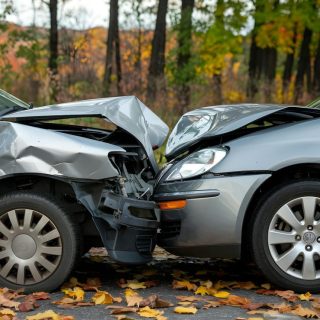Did you know that the United States has sustained 332 weather and climate disasters since 1980? In 2022 alone, there have been nine disastrous weather events.
Whether you’ve been the victim of a natural disaster or want to prepare for the worst, this is the guide for you! We uncover the various steps it takes to recover from a natural disaster.
Keep reading to learn more.
Consider Your Safety—First and Foremost
The first thing to consider when recovering from a natural disaster is your and your family’s safety. If you must evacuate before a disaster occurs, stay together and ensure each person has an emergency kit.
A battery-powered radio is a great resource to help locate medical care and shelters if you must leave in a hurry.
Assess the Damage to Your Home
After ensuring your safety, you can make it back to your home when it’s safe. During this time, assess the damages using a cell phone or notebook. Taking photos with your phone or a camera is your best bet.
The type of damage you encounter depends on the type of natural disaster that occurred. For example, hurricanes cause considerable roof damage, while earthquakes can cause cracks in your foundation and walls.
Make sure your evidence is extensive, especially if you must make emergency repairs before an insurance agent can visit your home.
File a Claim Right Away
Since multiple people are likely to have damages to their homes, the sooner you file an insurance claim, the better. Filing quickly might allow you to start repairs faster.
If you don’t yet know the extent of your home’s damage, contact your insurance company to let them know that you will file an upcoming claim because of a natural disaster.
Your insurance company can then assign a claims adjuster to your file, and they will help you conduct a thorough examination of your property. This allows you to start the claims process before seeing the property.
It’s always wise to hire a property damage examiner to ensure your insurance company isn’t ripping you off.
Make Temporary Repairs Where Needed
There is a chance that you’ll need to make temporary property repairs to eliminate the possibility of further damage. For example, apply a tarp to keep the rain out if you have holes in the roof.
Repair quotes from various contractors are often free, so get multiple quotes to find the best option. Be wary of contractors that raise their prices when demand is high.
Remove valuable items from the house if you have to find shelter outside the home until repairs are made. Unoccupied homes that need repairs are common hot spots for thieves.
You won’t want to make any major repairs until your claim goes through. For example, if you repair something in your home and an insurance adjuster stops by, they might say that part of the home wasn’t damaged.
It can be challenging to wait, but it’ll work out better for you in the long run.
Keep Track of All Your Expenses
When handling emergency repairs, keep receipts and invoices from construction companies. Store these documents safely so you’ll have them when an insurer steps in.
Tracking expenses is necessary when an adjuster visits your home to discuss any steps you’ve already taken.
Talk to your insurance agent to determine if you have coverage for living expenses and emergency repairs. Additional living expenses coverage can pay for these costs.
Don’t Forget to Ask for Help
If you don’t have sufficient insurance coverage to deal with a natural disaster, ask for help.
FEMA is a government organization that often sets up local centres after a natural disaster and partners with organizations like the Red Cross. Through these services, you might be able to find help with the following:
- Childcare
- Repair costs
- Cleanup
- Mental health care
If the federal government doesn’t help out during a natural disaster, check if there are local groups offering support and services.
As a last resort, you can opt for emergency personal loans to help with repair and displacement costs. The following link will help determine if you qualify for a loan to help with emergency costs.
Protect Your Property
After disaster recovery, you might be able to protect your repaired property from natural disaster damage in the future. However, there aren’t always things you can do to prevent damage.
If you live in an area prone to hurricanes, buy a roof that can withstand high winds and heavy rain.
Areas prone to fires typically have to manage their landscaping per the rules outlined by their homeowners’ association. You can also install an automatic sprinkler system inside the home to lessen interior fire damage.
A contract might be able to retrofit your home to mitigate the risk of earthquake damage.
Stay updated on your area’s building codes and keep your home in good condition to lessen possible damages.
How to Recover From a Natural Disaster—Explained
Recovering from a natural disaster won’t happen in a day, but knowing the steps it takes to recover is vital.
First and foremost, make sure you and your family are safe. Then, visit the home when the disaster is over, assess damages, and file an insurance claim.
If you need to make temporary repairs, keep track of those expenses for insurance purposes. Lastly, ask for help if you don’t have enough insurance coverage.
For more articles on the home, check out the other posts on our blog.












